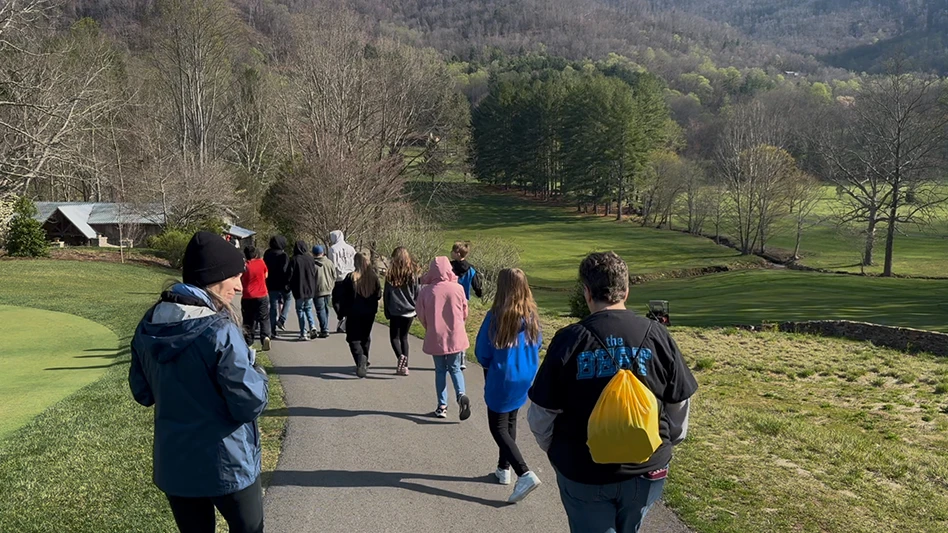|
|
At the recent Carolinas GCSA Conference & Show, Thomas Nikolai, Ph.D., turfgrass academic specialist at Michigan State University, and Michael Morris, CGCS, of Crystal Downs Country Club in Frankfort, Mich., gave a presentation about green speed. One of the slides showed three popular responses superintendents give when asked about green speed: Explain speed kills turfgrass, tell members to lower their expectations and lie. There are many superintendents who respond better, and data helps back them up.
There are three factors that contribute to the confusion or inaccuracy about green speed: the desire for faster greens by golfers, existing misinformation and the lack of communication between superintendents and golfers. Hence the question: How many superintendents spend time measuring and recording green speed daily, or even weekly? Even though some might think it’s a waste of time or it will set a higher standard to meet, superintendents should consider recording Stimpmeter readings more often if they want to ease the pressure and clear the confusion surrounding the green-speed issue. A correlation comes to mind: If you’re not measuring success, how do you know how well you’re doing?
Collecting and using data will help put golfers’ expectations more into perspective and help prevent the distortion and the unrealistic expectations many golfers have about course conditions.
Many factors affect green speed: weather, budgets, contours, mower maintenance, irrigation, what golfers deem acceptable, etc. Superintendents need to communicate and explain the aspects of course maintenance to golfers to help them understand that green speed at the course down the road shouldn’t be the same as green speed on their course. However, this is easier said than done.
Just as slope, contour and maintenance dictate driving speeds on roads, so too should slope, contour and maintenance dictate green speed, Nikolai says. Superintendents should think about creating contours on their greens to increase speed without lowering the height of cut.
Green speeds aren’t supposed to be standardized. They should remain up to course officials with input from superintendents. Many golfers don’t understand that, hence the challenge.
Superintendents should meet with their green chairmen and answer two questions: What are the green speeds day to day, and what is the best speed for the golf course? Nikolai and Morris recommend four steps for managing green speed and golfer expectations:
1. Determine daily green speeds by collecting and recording data;
2. Survey golfers to determine the target green-speed range for each golf course;
3. Evaluate maintenance practices to best manage green speeds in the target range; and
4. Communicate the results.
Consistency is key. If a superintendent determines ideal green-speed range is between 9.5 and 11, that should be the goal year round, knowing it might fluctuate out of that range. Once the ideal range is established, golfers will let the superintendent know if the green speed on a particular day feels above or below that range. Then the superintendent can look to change maintenance practices to make sure the consistency improves.
Green speeds can slow down, speed up or stay the same throughout the day because of weather and the condition or state of turfgrass. For example, green speed might decrease during the afternoon because the turf is growing the most at that time. Some golfers say green speed increases during the afternoon because the turf is drier.
The green-speed issue can be blamed on TV, competition, golfers’ dishonesty about their abilities and golfers who don’t know much about maintenance practices. However, superintendents can take charge by establishing an ideal green-speed range at each of their courses. And when golfers feel green speed doesn’t fall into that range on a certain day, superintendents can communicate why.
Superintendents must objectively take the green-speed issue head-on because it’s an opportunity to showcase their talents as professionals and to provide answers to golfers’ questions. Who knows, maybe they’ll silence a few of those pesky golfers that drive them nuts. GCN

Explore the January 2006 Issue
Check out more from this issue and find your next story to read.
Latest from Golf Course Industry
- From the publisher’s pen: Watery dilemma
- The Aquatrols Company hires marketing manager
- Renovating Bredemus in West Texas
- Renovation starts at Okatie Creek GC at Sun City Hilton Head
- The Fittest Podcast in Turf: Episode 1
- New 6-hole course debuts in Oklahoma
- GCSAA announces Grassroots Ambassador Leadership Award recipients
- Reel Turf Techs: David Gummo






